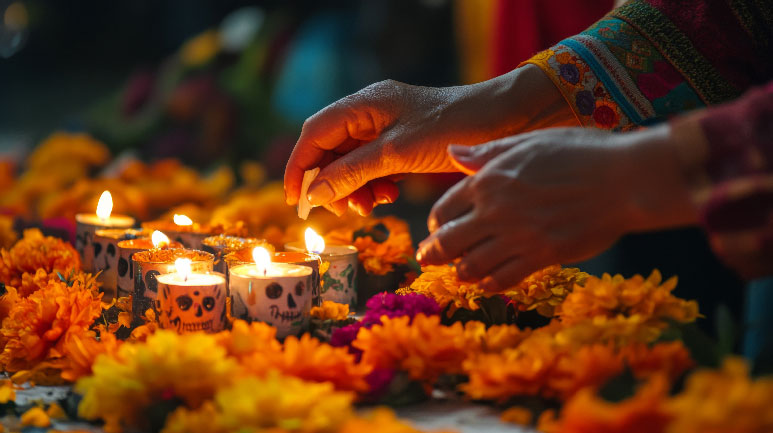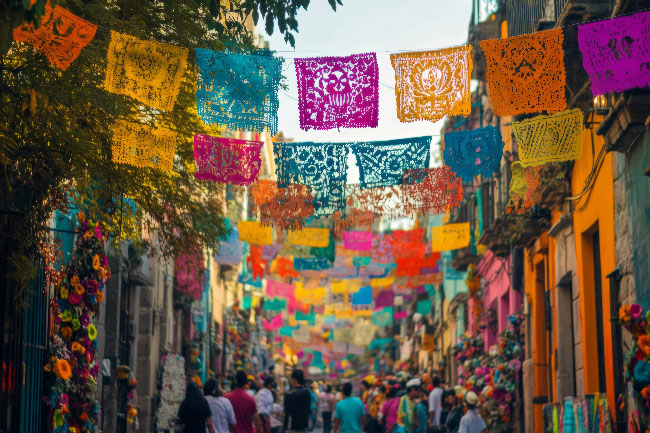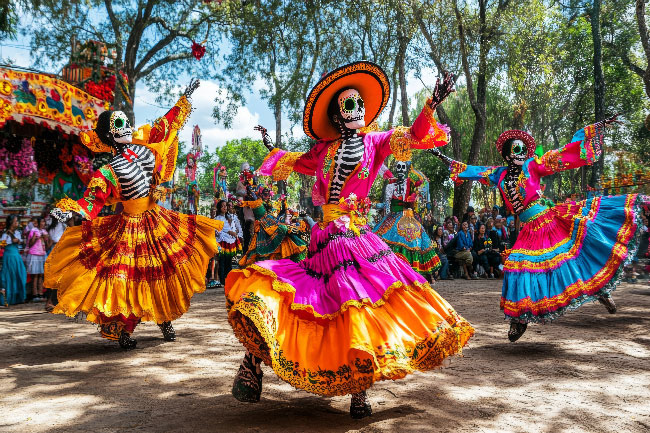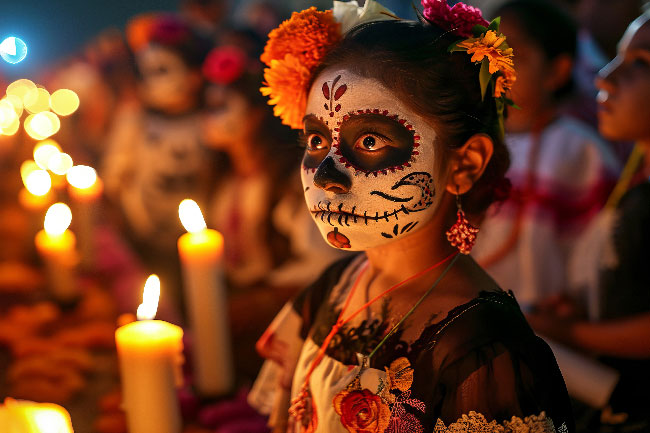

History and Significance
The origins of Días de los Muertos trace back to the pre-Hispanic period, with the Aztecs and Mayans laying the foundation for this centuries-old tradition. These ancient cultures believed in the cyclical nature of life and death, where the spirits of the deceased return to the world of the living to reunite with their loved ones. Over time, this belief evolved into the Días de los Muertos celebration, where families prepare for the spirits’ arrival with great care and reverence.
-
- Altars (Ofrendas): Families build elaborate altars in their homes, often decorating them with marigold flowers, candles, photographs, and items that were special to their deceased loved ones.
- Offerings: Special foods, such as pan de muerto (bread of the dead), mole, and tamales, along with beverages like tequila and atole, are left on altars as nourishment for the spirits during their visit.
- Parades: Colorful processions wind through the streets with locals dressed as skeletons and donning elaborate costumes and face paint.
- Traditional Cuisine: Food plays a central role in honoring the deceased with families sharing traditional meals both at home and during community gatherings.


Riviera Maya Events and Activities
The Riviera Maya offers an authentic and festive experience for those looking to partake in Días de los Muertos. Here are some key events and activities that visitors can enjoy:
-
- Playa del Carmen’s Parade: Join the lively procession through the streets, with locals and tourists alike participating in the celebrations. The parade features beautiful costumes, music, and floats that embody the spirit of the holiday.
- Xcaret Park’s Festival: Renowned for its cultural festivities, Xcaret Park hosts one of the most spectacular Días de los Muertos events. Expect performances, traditional food, and artisan crafts showcasing the region’s rich heritage.
- Tulum’s Altar Contest: Explore the town’s creative altar displays, where locals compete to create the most beautiful and meaningful tributes to their ancestors.
- Coba’s Cultural Events: In the ancient city of Coba, cultural workshops, lectures, and exhibitions delve deeper into the historical significance of Días de los Muertos, offering a unique perspective on the holiday’s roots.

Symbolism and Meaning
Each element of Días de los Muertos carries significant meaning:
-
- Marigolds (Cempasúchil): These vibrant flowers are believed to guide the spirits back to the world of the living.
- Candles (Velas): Lit candles symbolize the light that leads the spirits home.
- Incense (Copal): Used to purify the air and invite the spirits to visit.
- Skulls (Calaveras): Often made of sugar or chocolate, they represent the cycle of life and death, reminding us of the joy and sorrow intertwined in existence.
- Tissue paper flags (Papel picado) This are hung along streets, altars and homes. This flags guide the disease back to their families.
Días de los Muertos in Playa del Carmen and the Riviera Maya is much more than a holiday. It is a profound celebration of life, love, and remembrance.
Visitors are encouraged to participate in the festivities, witnessing firsthand the deep respect and joy with which locals honor their departed. Whether you are attending a parade, admiring the altars, or indulging in traditional cuisine.
These experiences will leave you with a lasting appreciation for Mexico’s spiritual and cultural heritage.

